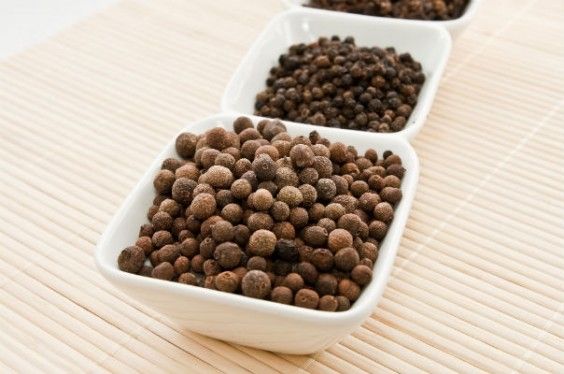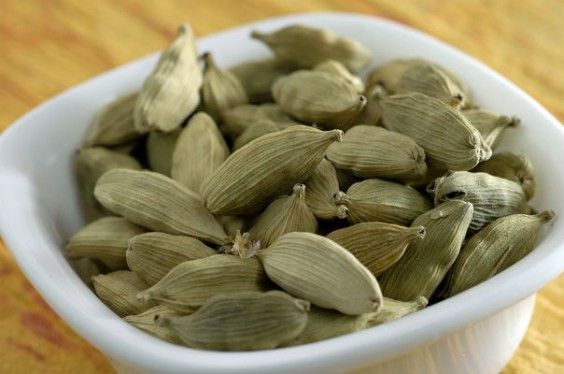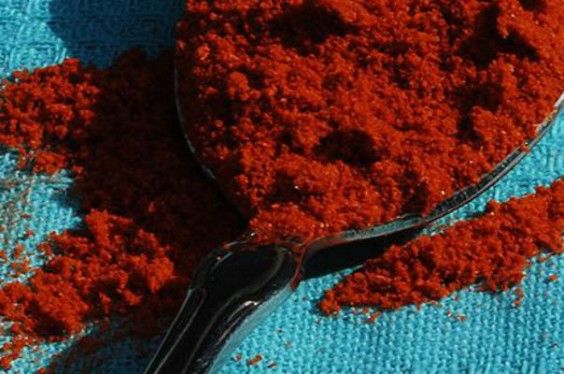We’ve already delved into the green world of fresh herbs, but now it’s time to dust off the old spice jars to find out why they’re good for us and how to use them. Pepper may be the only one you’re used to, but we’ve got the specifics on more spices, and spice blends, to flavor healthy meals from breakfast to dessert.
The How-tos
Buy whole
Whole spices last longer than ground versions, but you’ll need a grinder. A mortar and pestle or a dedicated coffee grinder work like a charm!
Keep in a cool, dry place
Keep spices away from heat, moisture, and direct sunlight. Avoid tacking a spice rack above the stovetop or oven — heat and moisture can negatively affect spices’ quality. And when sprinkling spices into a dish, pour into your hand before adding them to food: Shaking the jar directly over a steaming pot can cake up the rest of its contents. Another stay-dry tip is to replace the lid immediately after use.
Toss the old ones
Spices don’t actually go bad per se, but they lose flavor as they age. Whole seeds last around three to four years, while ground has a shelf life of two to three years. If a spice looks dull and has lost some of its original color, then give it the boot. And make sure to date the back of the bottle to keep tabs on when it’s time to buy new ones.
Store creatively
Instead of teetering spice jars on top of one another in a crammed pantry, check out some innovative ways to store them, like in-drawer racks, mini-mason jars for a pretty wall installment, or even corked test tubes!
The Spices
Allspice
This spice was first named Jamaican pepper and later changed to allspice which, just like its name implies, tastes like a mixture of nutmeg, cinnamon, ginger, and pepper. Research suggests that some compounds found in allspice — including eugenol and gallic acid — may have anti-tumor properties on human cancer cells
Taste: Like a strong blend of cinnamon, nutmeg, and clove, a hint peppery
Perfect For: German and Caribbean cuisine, cakes, cookies, stew, lamb, fruit pies, pickles
Greatist Recipe Pick: Add to this cold-weather quinoa breakfast bake or incorporate a pinch into these comforting baked apples.
Cardamom
Cardamom may have the potential to prevent against some small, potentially-cancerous skin growths, called papillomas
Taste: Warm, spicy, sweet
Perfect For: Scandinavian and Indian cuisine, chai tea
Greatist Recipe Pick: Take boring smoothies to new (spicy) heights by adding cardamom to a coconut-lime, vanilla chai, or apple pie rendition. We also like cardamom in this pumpkin pie oatmeal.
Cayenne Pepper
Alias: Red pepper. Studies suggest this fiery spice, which gets its flavor from capsaicin, may increase fat oxidation, allowing the body to better use fat as fuel
Taste: Hot, smoky
Perfect For: Mexican and Southwestern cuisine, chili, eggs, fish, vegetables
Greatist Recipe Pick: Heat up this veggie chili with a small dose of cayenne.
Cinnamon
This spice, which compliments both sweet and savory dishes, has a range of health benefits from reducing arthritis pain to keeping the mouth clean
Taste: Sweet, hot
Perfect For: Mexican and Greek cuisine, grilled fruit, curries, cakes, oatmeal
Greatist Recipe Pick: Add to super simple crockpot recipes like apple-cinnamon breakfast risotto or homemade pumpkin butter for no-fuss flavor.
Clove
Cloves, which are dried flower buds, provide a burst of flavor even in small amounts. One study found cloves to be the best natural antioxidant because they contain high levels of phenolic compounds, as well as other beneficial properties
Taste: Aromatic, sweet
Perfect For: Caribbean and Indian cuisine, pineapple, meats, soups, pork, mulled wine, chutneys
Greatist Recipe Pick: Make a batch of fool-proof spiced nuts or simmer up some mulled wine.
Cumin
Be careful not to douse a dish with this powerful spice — a little goes a long way. Aside from providing great flavor, this spice has traditionally been used for the treatment of sleep disorders, indigestion, and hypertension
Taste: Earthy, warm, nutty
Perfect For: Mexican and Asian cuisine, beans, stews, soups, tacos, and sauces
Greatist Recipe Pick: Use cumin to warm up this chickpea, kale, and tomato soup or incorporate it into this chili spice rub.
Fennel
Traditional Iranian medicine calls on fennel for its antioxidant, anti-inflammatory, antimicrobial, and memory-enhancing properties (amongst many others)
Taste: Licorice-like
Perfect For: Italian cuisine, sausage, bread, fish, pork, pasta
Greatist Recipe Pick: Use fennel seeds and bulbs to flavor this barley risotto.
Ginger
Slightly spicy, slightly sweet ginger root is used in cooking both in its fresh and dried and ground forms. It has been used to treat nausea, ease sore muscles, and help alleviate symptoms of arthritis
Taste: Spicy, sweet, slight citrus flavor
Perfect For: Asian, Indian, and Middle Eastern cuisine, marinades, squash, desserts, oats, hot tea, gingerbread, pickled ginger
Greatist Recipe Pick: Use fresh or dried ginger in this quinoa and vegetable salad.
Mustard Powder
Mustard powder, made from ground mustard seeds, is often used to make homemade mayo, dressings, and marinades. Adding powdered mustard seeds to broccoli during cooking may increase its ability to prevent the development of cancer
Taste: Often spicy and stronger in flavor than jarred mustard.
Perfect For: German cuisine, vegetables, seafood, salad dressings, stews
Greatist Recipe Pick: Made-from-scratch marinades like this sweet-and-spicy version.
Nutmeg
We like to use this spice to make healthier pie (adding more flavor means you can cut back on the fat and sugar). Some studies suggest nutmeg can help repel cavities (not that we fully endorse eating the whole pie in one sitting)
Taste: Warm, sweet, nutty, spicy
Perfect For: Cakes, sauces, spinach, cookies, milk or cream-based dishes like custards or puddings, eggnog
Greatist Recipe Pick: Indian, French, Scandinavian, and Caribbean cuisine. Use it as an unexpected way to flavor up this crustless vegetable quiche or blend into this chocolate blueberry smoothie.
Paprika
This bright red spice is made from dried and ground mild chili peppers. For those who can’t handle the heat, there’s no need to get out of the kitchen — paprika provides a toned down, more smoky chili flavor. One health benefit of paprika is its ability to protect the body’s cells from oxidative stress (for example, smoking), which is believed to cause a number of diseases
Taste: Mild, sweet, some may be hotter than others
Perfect For: German and Spanish cuisine, eggs, seafood, vegetables, goulash
Greatist Recipe Pick: Sprinkle some paprika to add color to these baked “potato” wedges (made from celery root).
Pepper
Peppercorns come in black, white, and green varieties. There are pink peppercorns, which have a deeper pepperiness and chile-like heat compared to black pepper. The best thing about pepper is that it’s great in nearly everything. Switch things up and crack some pepper over grilled fruit for a surprising kick. Research suggests black pepper consumption can reduce high-fat diet induced oxidative stress to our body’s cells
Taste: Hot and zesty
Perfect For: Pretty much anything — dressings, soups, salads, and meat dishes, for starters!
Greatist Recipe Pick: Pepper is a must in this quick and easy veggie chili, and spices up these baked black bean and quinoa burgers.
Saffron
Time to get steamy! Research shows that saffron, the most expensive of all spices, can actually improve sexual function
Taste: Slightly bitter but also slightly sweet, warm
Perfect For: Spanish, Indian, and North African cuisine, risotto, paella
Greatist Recipe Pick: Turn on the crockpot for this saffron-infused root vegetable stew.
Salt
Salt comes in many varieties — rock salt, Fleur de Sel, and Kosher salt to name a few. Though this naturally occurring chemical compound isn’t actually a spice, we’re including it on the list since it’s the centerpiece on many kitchen tables. The American Medical Association has suggested we reduce salt consumption because too much can contribute to health issues like high blood pressure and heart disease
Taste: Salty! Earthy, savory
Perfect For: Boosting the flavor of savory and sweet dishes, anything from baked goods to salads.
Greatist Recipe Pick: Get your snack fix with these spicy roasted chickpeas or eggplant chips with basil yogurt dip.
Star Anise
This spice gets its name from the way it’s shaped, like a tiny little star. Take a big whiff when you’re feeling stressed out — anise is known for its ability to reduce tension and help increase mental clarity.
Taste: Strong licorice flavor
Perfect For: Chinese and Indian cuisine, cakes, cookies, roasted fruit
Greatist Recipe Pick: Whip up this fancy star anise syrup or healthy orange-date-apricot muffins.
Turmeric
The root of a plant related to ginger, turmeric is known for its many superfood powers like the ability to help relieve the pain, swelling, and redness that may come from inflammation-inducing conditions
Taste: Earthy, slightly bitter
Perfect For: Indian and Moroccan cuisine, poultry, lamb, curries, stews, rice dishes
Greatist Recipe Pick: Amp up your smoothie flavor palette, and toss some of this yellow spice into a raspberry turmeric smoothie.
Blends
A quick perusal of the Internet reveals a slew of homemade versions of spice blends, but for a little convenience in a jar, check out the pre-mixed blends parked right next to the main spices at the grocery store.
Chinese Five Spice
The five spices — star anise, cloves, cinnamon, Sichuan pepper, and fennel seeds — are often used in Asian pork and duck dishes, as well as a seasoning for the breading on fried foods.
Perfect For: Chinese cuisine, pork, duck, beef stew, breading, seafood
Chili Powder
Photo: djwtwo
This mixture is commonly made from ground chili peppers, paprika, cumin, and black pepper. Some versions are milder than others.
Perfect For: Mexican dishes, Chili (duh), beans
Curry Powder
Curry powder is a Western term, but the mixture of spices is often called garam masala in India. Most curry powders are made up of coriander, turmeric, cumin, fenugreek, and red pepper, though the mix varies.
Perfect For: Indian cuisine, curries, tomato sauces, stews
Italian Seasoning
Made from garlic, onion, and herbs like rosemary, oregano, thyme, and marjoram, this blend is often considered a kitchen staple. This blend can vary a ton, with some including red pepper flakes for heat or a wider range of dried herbs.
Perfect For: Pizza, pasta dishes, hearty meat stews, broth-based soups
Lemon Pepper
The premise behind this mix is simple: Lemon and pepper. The lemon portion comes from zesting the peel. This mix often includes salt, too.
Perfect For: Use as a rub for fish, poultry, or burgers, sprinkled on salads, vegetables, potatoes
Pickling Spice
This one, made from black peppercorns, mustard seeds, red pepper flakes, allspice, dill seed, bay leaves, cloves, and sometimes cinnamon and ginger, is the go-to blend (when added to a vinegar base) for pickling veggies and eggs.
Perfect For: Cucumbers, eggs, pepper, beets, sauerkraut, onions
Poultry Seasoning
Like many spice blends, poultry seasoning states it’s purpose in the name. The mix often includes sage, pepper, lemon peel, savory, rosemary, dill, allspice, thyme, marjoram, and ginger. Talk about convenience in a bottle!
Perfect For: Chicken, turkey, stuffing, broth-based soups
Pumpkin Pie Spice
Though its name may insinuate that this spice mix actually tastes like pumpkin pie, its got no traces of the superfood. It does, however, comprise the main seasoning agents used in a traditional pumpkin pie — cinnamon, nutmeg, ginger, cloves, and allspice.
Perfect For: Pumpkin pie! oats, coffee drinks, cookies



